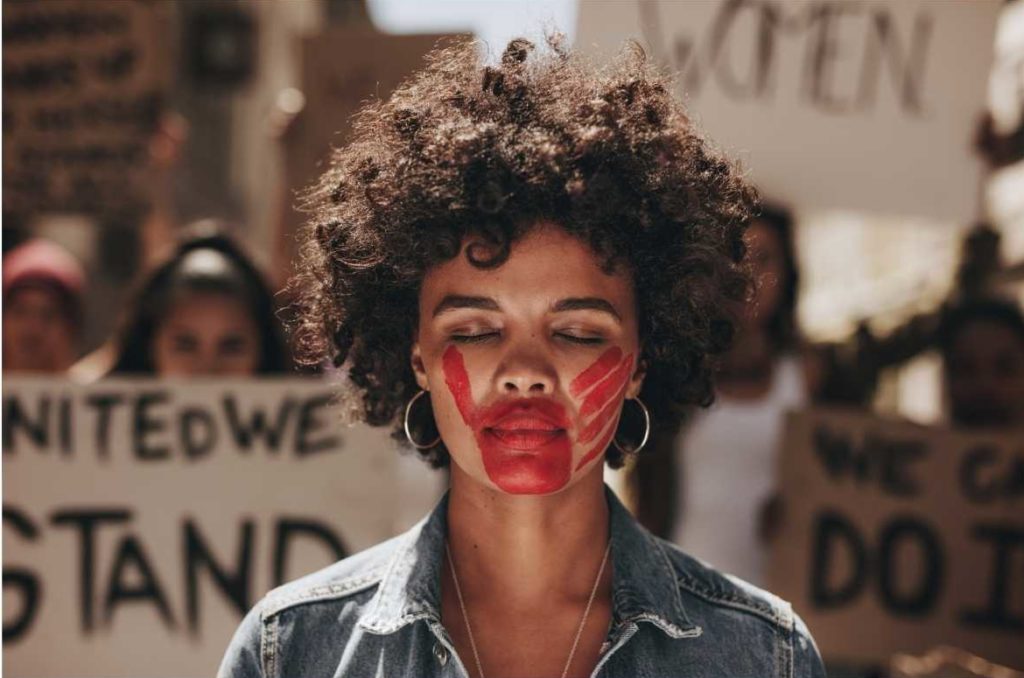While April is sexual assault awareness month, sexual violence has plagued the black community for numerous years. Sexual violence has been used in war, slavery, within families, etc. While sexual violence occurs across all racial and ethnic groups, black bodies have encountered a staggering amount of this. The Institute for Women’s Policy Research reports that “more than twenty percent of black women are raped during their lifetimes-a higher share than among all women overall.”
Not only do these black bodies experience assault, but they often receive messages that it is best to stay in silence. According to the National Center on Violence Against Women in the Black Community, “for every black woman who reports rape, at least 15 black women do not report and one in four black girls will be sexually abused before the age of 18”.Those who try to tell their story may be ignored or shamed, often forcing the assault to continue to live within the body long after the assault. By understanding the potential signs of sexual assault, we can work to help heal and protect black bodies.
According to the Rape, Abuse & Incest National Network (RAINN), signs of sexual assault can look different for everyone. However, a few common signs can include:[1]
- Signs of depression, such as persistent sadness, lack of energy, changes in sleep or appetite, withdrawing from normal activities, or feeling “down”
- Self-harming behaviors, thoughts of suicide, or suicidal behaviors
- A decrease in self-esteem
- Anxiety or worry about situations that did not seem to cause anxiety in the past
- Avoidance of specific situations or places
- Increase in drinking or drug use
- Nightmares or fear of being alone
- Signs of physical abuse, such as bruises
- Changes in self-care, such as paying less attention to hygiene, appearance, or fashion than they usually do
For youth, these warning signs may look a bit different. RAINN notes that for youth, signs can look like excessive talk about or knowledge of sexual topics, keeping secrets or not talking as much as usual. Children may also not want to be left alone with certain people or may engage in regressive behaviors that they had previously grown out of, such as thumbsucking or bedwetting. They may also avoid removing clothing to change or bathe and may also have signs of trauma particularity to the genital area, such as unexplained bleeding or bruising. Children can also exhibit similar signs as adults, such as harming themselves or having thoughts of suicide. Their grades may also start to fall. Caregivers may also see changes in eating habits, mood, or personality, and youth may withdraw from various activities (Warning Signs | RAINN)
While this list contains some of the common warning signs, a person may exhibit some, all, or none of these symptoms. It is most important to create a safe space for individuals to talk about what may have happened to them, without judgment.
If you, or someone who you know has experienced sexual assault:
- Seek support. Often feelings of shame arise when we are unable to tell our story, which can negatively impact our overall mental health. Consider reaching out to a support that you trust. Find a mental health professional or join a support group to assist you in your healing process. You can also call the sexual assault hotline at 1-800-656-4673.
- Pay attention to your body. When our body is violated, the mind sometimes disconnects to protect ourselves. Consider ways that you can safely get back in touch with your body. Exercise, such as dance and yoga, can help us reconnect with our bodies and find a way to heal ourselves. If you are supporting someone who has experienced a sexual assault, offer to go to a class with your loved one to offer additional support.
- Support laws and organizations that amplify the voices who have experienced sexual assault, particularly for black women. Learn about your local elected officials’ policies and find out how they are planning to address sexual violence in your community. Find out about national laws that Congress has worked on such as the Violence against Women Act and contact your representative to advocate for protective policies.
Resources for additional support:
- https://www.rainn.org/national-resources-sexual-assault-survivors-and-their-loved-ones
- Cite Black Women. – HOME (citeblackwomencollective.org)
- https://www.nsvrc.org/find-help
[1] https://www.rainn.org/warning-signs
